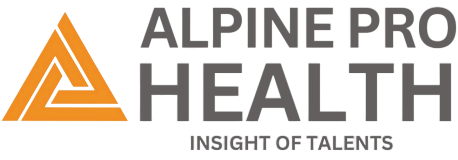Heatstroke is a serious medical condition that occurs when the body’s temperature regulation system fails due to prolonged exposure to high temperatures or physical exertion in hot environments. Proper ICD-10 coding and thorough clinical documentation are crucial for accurate diagnosis, treatment, and reimbursement.
Heatstroke & Sunstroke ICD-10 coding
The primary ICD-10 code for heatstroke and sunstroke is:
- T67.0XXA – Heatstroke and sunstroke, initial encounter
- T67.0XXD – Heatstroke and sunstroke, subsequent encounter
- T67.0XXS – Heatstroke and sunstroke, sequela
Related ICD-10 Codes for Other Heat Related Conditions
- T67.1XXA – Heat syncope (fainting due to heat exposure)
- T67.2XXA – Heat cramps
- T67.3XXA – Heat exhaustion, anhidrotic (due to dehydration)
- T67.4XXA – Heat exhaustion due to salt depletion
- T67.5XXA – Heat exhaustion, unspecified
- T67.7XXA – Heat fatigue, transient
- T67.9XXA – Unspecified effects of heat and light
Key Documentation Elements for Heatstroke
To ensure accurate coding and proper patient care, documentation should include:
Clinical Presentation for Heatstroke & Sunstroke ICD-10 coding
- Core body temperature (≥104°F or 40°C)
- Neurological symptoms (confusion, seizures, unconsciousness)
- Skin condition (hot, dry, or moist)
- Cardiovascular signs (tachycardia, hypotension)
- Respiratory status
- Any history of heat exposure or exertion
Risk Factors
- Occupational exposure (e.g., outdoor workers, athletes, military personnel)
- Pre-existing medical conditions (e.g., cardiovascular disease, dehydration, obesity)
- Medications affecting thermoregulation (e.g., diuretics, antipsychotics)
- Environmental conditions (e.g., heatwaves, high humidity)
Diagnostic Tests and Findings
- Core temperature measurement
- Blood tests (electrolytes, renal function, coagulation profile)
- Imaging if necessary (brain CT/MRI for neurological involvement)
- Urinalysis (to check for kidney damage)
Treatment and Management
- Immediate cooling methods (ice packs, cold-water immersion, evaporative cooling)
- IV fluids for hydration
- Oxygen therapy if respiratory distress occurs
- Monitoring for complications (e.g., multi-organ dysfunction, rhabdomyolysis)
- Follow up care and patient education on heat illness preventionClinical Documentation Tips
Accurate documentation is crucial for proper coding and reimbursement. Consider including:
- Symptoms : High body temperature, altered mental state, rapid heartbeat, hot and dry skin, nausea, and seizures.
- Exposure Details : Outdoor activity, direct sun exposure, working conditions, and duration of heat exposure.
- Interventions Provided : Cooling techniques, IV fluids, oxygen therapy, hospitalization.
- Complications : If present, such as kidney failure, seizures, or multi-organ dysfunction, document clearly for appropriate secondary codes.
- Encounter Type : Initial, subsequent, or sequela to ensure correct ICD-10 code assignment.
Coding Scenarios
Example 1:
Scenario: A construction worker is brought to the ER after collapsing due to prolonged sun exposure. Diagnosis: Heatstroke.
- Code: T67.0XXA
Example 2:
Scenario: A patient presents with dehydration and confusion two weeks after a severe heatstroke episode.
- Code: T67.0XXS (sequela of heatstroke)
Best Practices for Heatstroke & Sunstroke Coding and Documentation
- Clearly specify heat stroke vs. heat exhaustion (T67.3XXA for heat exhaustion)
- Indicate associated complications and comorbidities
- Document the setting and circumstances (e.g., occupational exposure, athletic activity)
- Use appropriate external cause codes (W92.XX – exposure to excessive heat, X30 – exposure to natural heat)
Preventive Documentation
Providers should also document patient education on:
- Hydration and electrolyte replacement
- Avoidance of strenuous activity during extreme heat
- Wearing light-colored, loose-fitting clothing
- Early recognition of symptoms
Accurate ICD-10 coding and comprehensive documentation help improve patient outcomes, support proper billing, and contribute to medical research on heat related illnesses. Always ensure that documentation reflects the full clinical picture for optimal coding accuracy.


